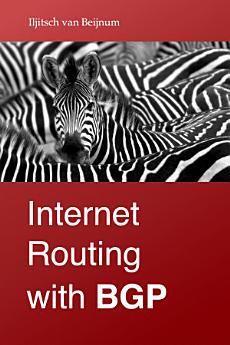Internet Routing with BGP
या ई-पुस्तकाविषयी
BGP is a routing protocol: its main job is to allow each network to learn which ranges of IP addresses are used where, so packets can flow along the correct route.
However, BGP has a more difficult job to do than other routing protocols. Yes, it has to make the packets reach their destination, but BGP also has to pay attention to the business side: those packets only get to flow over a network link if either the sender or the receiver pays for the privilege.
This book covers the fundamentals of the technical side of BGP, and also looks at the intersection between the technical and business aspects of internet routing.
The book contains 40 configuration examples that readers can try out on their own computer in a “BGP minilab”.
रेटिंग आणि पुनरावलोकने
लेखकाविषयी
Iljitsch van Beijnum got his start in the Dutch Internet Service Provider business in 1995. He soon realized that in order to maintain more than one connection to the internet, you need something called “BGP”. In 1997, he co-founded Pine Internet (later Pine Digital Security). In 1999, he worked for UUNET Netherlands on designing and implementing a new Dutch high speed backbone.
In 2000, Iljitsch started his own business now called inet⁶ consult. Between 2000 and 2007, he mostly did work for web hosting companies, among other things helping them connect to internet exchanges.
In 2002, he authored “BGP, Building Reliable Networks with the Border Gateway Protocol”, published by O'Reilly, and in 2005 “Running IPv6”, published by Apress. He also started attending IETF meetings in 2002.
In 2007, Iljitsch started writing for Ars Technica. Later that year he moved to Spain to become a research assistant at UC3M, where he did more IETF work, most notably on NAT64 and DNS64 as well as a suggested improvement to BGP. Iljitsch holds a bachelor's degree in Information and Communication Technology from the Haagse Hogeschool in The Hague and a master's degree in telematics from UC3M Madrid.
After returning to the Netherlands, in 2016 Iljitsch joined Logius, an agency of the Dutch Ministry of the Interior and Kingdom Relations. As a network architect, he was responsible for the Dutch government-wide IPv6 numbering plan. In 2019 he left Logius to return to being independent.




